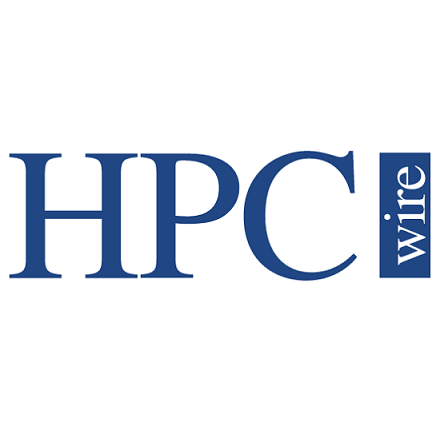
TSUBAME3.0 Points to Future HPE Pascal-NVLink-OPA Server
February 17, 2017
Since our initial coverage of the TSUBAME3.0 supercomputer yesterday, more details have come to light on this innovative project. Of particular interest is a new board design for NVLink-equipped Pascal P100 GPUs that will create another entrant to the space currently occupied by Nvidia's DGX-1 system, IBM's "Minsky" platform and the Supermicro SuperServer (1028GQ-TXR). Read more…

Tokyo Tech’s TSUBAME3.0 Will Be First HPE-SGI Super
February 16, 2017
In a press event Friday afternoon local time in Japan, Tokyo Institute of Technology (Tokyo Tech) announced its plans for the TSUBAME3.0 supercomputer, which w Read more…

The Weekly Top Five – 05/05/2011
May 5, 2011
The Weekly Top Five features the five biggest HPC stories of the week, condensed for your reading pleasure. This week, we cover ISRO's newest supercomputer; Tokyo Tech's selection of EM Photonics' CULA library; Intel's 3-D transistor breakthrough; the latest LSF Tools from Platform Computing; and SciNet's new NextIO GPU-based system. Read more…

The Second Coming of TSUBAME
October 14, 2010
When the TSUBAME 2.0 supercomputer is formally inaugurated in December, it will officially be declared the fastest supercomputer in Japan. However, it’s not simply speed that separates this machine; boasting a raw performance of 2.4 petaflops, the new TSUBAME exceeds the total FLOPS capacity of all other government and academic supercomputers in Japan today. That kind of computational brawn will make it the platform of choice for some of the most powerful scientific applications on the planet. Read more…

The Week in Review – 06/24/2010
June 24, 2010
Tokyo Tech releases more details on Tsumabe 2.0 in anticipation of fall startup; and several Web-centric servers make their debut. We recap those stories and more in our weekly wrapup. Read more…

The Week in Review – 04/01/2010
April 1, 2010
Cray wins NNSA supercomputing contract; and Tokyo Tech researchers make breakthroughs in weather forecasting using GPU computing. We recap those stories and more in our weekly wrapup. Read more…

Tokyo Tech Aims for 3 Petaflop Super in 2010
November 18, 2009
Buying Teslas by the bushel. Read more…

- Click Here for More Headlines

Whitepaper
Transforming Industrial and Automotive Manufacturing
In this era, expansion in digital infrastructure capacity is inevitable. Parallel to this, climate change consciousness is also rising, making sustainability a mandatory part of the organization’s functioning. As computing workloads such as AI and HPC continue to surge, so does the energy consumption, posing environmental woes. IT departments within organizations have a crucial role in combating this challenge. They can significantly drive sustainable practices by influencing newer technologies and process adoption that aid in mitigating the effects of climate change.
While buying more sustainable IT solutions is an option, partnering with IT solutions providers, such and Lenovo and Intel, who are committed to sustainability and aiding customers in executing sustainability strategies is likely to be more impactful.
Learn how Lenovo and Intel, through their partnership, are strongly positioned to address this need with their innovations driving energy efficiency and environmental stewardship.
Download Now
Sponsored by Lenovo
Whitepaper
How Direct Liquid Cooling Improves Data Center Energy Efficiency
Data centers are experiencing increasing power consumption, space constraints and cooling demands due to the unprecedented computing power required by today’s chips and servers. HVAC cooling systems consume approximately 40% of a data center’s electricity. These systems traditionally use air conditioning, air handling and fans to cool the data center facility and IT equipment, ultimately resulting in high energy consumption and high carbon emissions. Data centers are moving to direct liquid cooled (DLC) systems to improve cooling efficiency thus lowering their PUE, operating expenses (OPEX) and carbon footprint.
This paper describes how CoolIT Systems (CoolIT) meets the need for improved energy efficiency in data centers and includes case studies that show how CoolIT’s DLC solutions improve energy efficiency, increase rack density, lower OPEX, and enable sustainability programs. CoolIT is the global market and innovation leader in scalable DLC solutions for the world’s most demanding computing environments. CoolIT’s end-to-end solutions meet the rising demand in cooling and the rising demand for energy efficiency.
Download Now
Sponsored by CoolIT
Advanced Scale Career Development & Workforce Enhancement Center
Featured Advanced Scale Jobs:
HPCwire Resource Library
HPCwire Product Showcase
© 2024 HPCwire. All Rights Reserved. A Tabor Communications Publication
HPCwire is a registered trademark of Tabor Communications, Inc. Use of this site is governed by our Terms of Use and Privacy Policy.
Reproduction in whole or in part in any form or medium without express written permission of Tabor Communications, Inc. is prohibited.
























